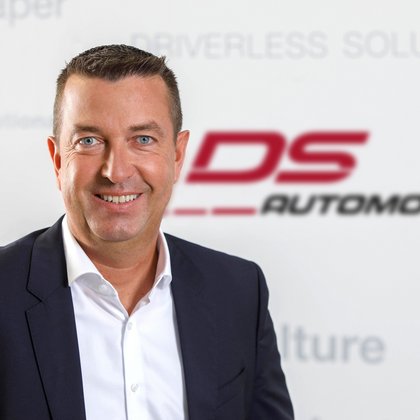Wolfgang Hillingers interview on VDA5050 and news in the AGV segment

In the interview with Wolfgang Hillinger, CEO of DS AUTOMOTION and member of the board of VDMA, the topic of VDA 5050, the advantages and disadvantages of a manufacturer-independent fleet manager and topics such as Plannable Autonomy are discussed. The question of what is behind the Layout Interchange Format will also be clarified and a look into the future of driverless transport systems will be ventured.
Share article
How far along is VDA 5050?
The official status shows little, but the active VDMA providers are already further along, with version 2.0 coming in the first quarter of 2023, on which the AGV meshup will be based at the end of March 2023. It can manage different vehicles from different providers and navigation types. It also identifies autonomously navigating zones.
Is VDA5050 compliant a uniform standard?
Yes and No. It is a standard, but it allows for some interpretation and wording. I would paraphrase it as saying that we all speak the same language, but everyone has their own dialect. We at the VDMA have recognized the general problem of whether it is compliant or not, and we are devoting ourselves separately to this topic. For this, we need a qualitative and neutral evaluation.
What are the advantages of vendor-independent fleet managers?
Some operators believe that this vendor independence offers great added value. The advantage of these newly created management systems is a modern framework with associated benefits, few of which are perceived by the operator. However, the systems only focus on the AGV and their transport orders and only map the recorded material flow. For jobs away from the digital world, these managers quickly reach their limits. Keyword empties. In most companies, transports of empties are rarely recorded in an ERP system, and must be recorded and generated in an AGV project itself.
For special material flow logics, to make an AGV more efficient or to guarantee certain supply security, customer-specific material flow logics often have to be realized, which not every independent can supply.
But when it comes to integrating manned vehicles or other logistics processes, they are further ahead. This is where the classic AGV manufacturers differentiate themselves from the independent ones.
What are the disadvantages or problems of providing a vendor-independent fleet manager?
The regulation of responsibilities is problematic. Who is responsible for the driving course, risk analysis, joint commissioning, order processing and any adjustments - this can be very problematic for the customer, but also for the FTF manufacturer, and has already led to major project delays and additional costs. This problem has also led to the formation of a working group within the VDMA, which has also developed a standard including role responsibilities. LIF - Layout Interchange Format.
Keyword LIFT - Layout Interchange Format what is behind it?
The VDMA has a working group on this, which we at DS AUTOMOTION initiated. It regulates responsibilities, definition of the responsibilities of those involved in a realization/change as well as the transfer of the course data to fleet managers. In the first quarter of 2023, the first version will be published, but many of our members in the VDMA who are also actively involved are also on a level of knowledge here, even if it has not yet been published. It already helps all of us with an active implementation in projects. Customers and manufacturers!
Planned autonomy - a topic only for the hospital?
No - Currently the entire industry is divided into AMRs and AGVs- i.e. fixed and flexible guideway. In some cases it has to be clarified - how much autonomy does the operator need. AMRs are inferior to AGVs in terms of performance (transport capacity / vehicle). The autonomy functionality is not an advantage per se, but it is important and must be used where it adds value to the customer. We offer the best of both worlds with plannable autonomy in a facility. Where throughput and orderly transport flow is desired, we drive fixed and in zones where the customer wants flexibility, we give the vehicles the freedom to leave their efficient lane and in other zones we leave it entirely to the vehicle to drive autonomously. A real added value for our customers with this innovative solution.
Speaking of navigation, what comes after SLAM?
I think camera-based systems and therefore in 3D are the future. Especially if personal protection is integrated, then we have everything we need to see safely.
Final question: What is the delivery situation in Linz?
Of course, this supply chain situation also causes us problems. Under these circumstances, it becomes clear who is a supplier and who is a partner. However, there is one thing we must not forget under these circumstances: not only do we have these problems, but so do our customers. As a rule, many of our customers also show understanding to a certain extent.